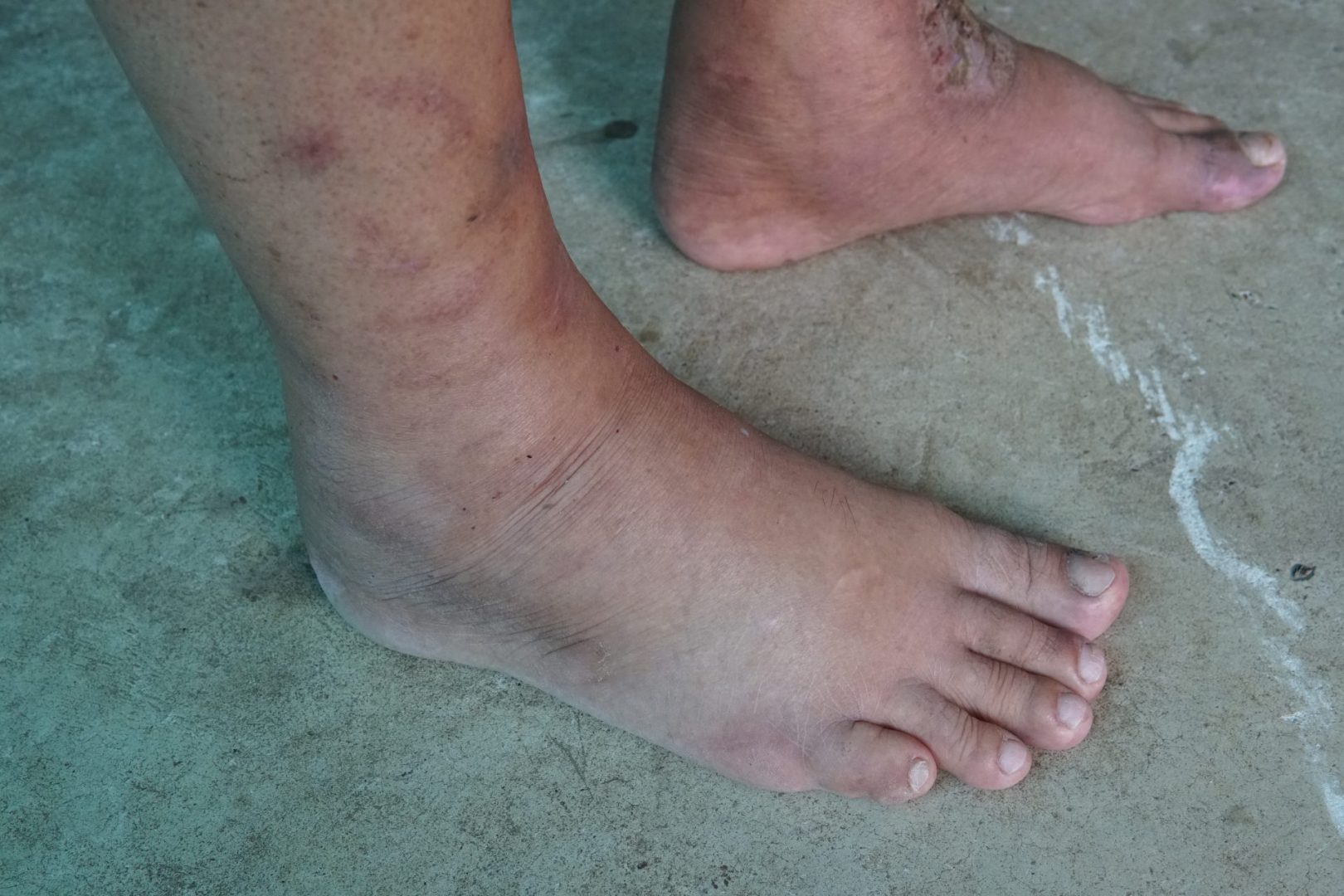Your kidneys work tirelessly every day, filtering approximately 120 to 150 quarts of blood to produce about 1 to 2 quarts of urine. These vital organs remove waste products, excess water, and toxins while maintaining the delicate balance of minerals and chemicals your body needs to function properly. When kidney function begins to decline, the body sends warning signals that many people dismiss as minor inconveniences or attribute to other causes.
Kidney disease often progresses silently for years before symptoms become obvious, earning it the nickname “silent killer.” By the time most people recognize they have kidney problems, significant damage has already occurred. However, the kidneys do provide early warning signs for those who know what to look for and take them seriously.
Understanding these warning signs and taking immediate action can mean the difference between preserving kidney function and facing dialysis or transplant. The earlier kidney problems are detected and addressed, the better the chances of slowing or even reversing the damage through targeted interventions and lifestyle modifications.
1. Changes in urination patterns signal kidney distress
The most common early warning sign of kidney problems involves changes in urination frequency, color, or consistency. Healthy kidneys produce steady amounts of pale yellow urine throughout the day, but declining kidney function creates noticeable alterations in these patterns.
Increased nighttime urination often represents one of the first signs of kidney dysfunction. When kidneys struggle to concentrate urine effectively, they produce larger volumes that create frequent bathroom trips, particularly during sleep hours. This symptom differs from temporary increases due to excessive fluid intake or bladder irritants.
Foamy or bubbly urine indicates protein leakage that shouldn’t occur with healthy kidney function. Normal urine appears clear or slightly cloudy, but persistent foam suggests the kidneys are allowing proteins to escape into the urine instead of retaining them in the bloodstream. This protein loss can signal significant kidney damage requiring immediate attention.
Blood in urine, whether visible to the naked eye or detected through testing, always warrants investigation. While several conditions can cause blood in urine, kidney disease represents one possibility that requires prompt evaluation. The blood may appear as pink, red, or brown discoloration, or may only be detectable through laboratory analysis.
2. Persistent fatigue and weakness indicate declining function
Healthy kidneys produce a hormone called erythropoietin that stimulates red blood cell production in bone marrow. When kidney function declines, erythropoietin production decreases, leading to fewer red blood cells and resulting anemia. This anemia creates persistent fatigue that doesn’t improve with rest or sleep.
The fatigue associated with kidney disease differs from normal tiredness in several key ways. It tends to be constant rather than episodic, doesn’t improve significantly with rest, and often interferes with normal daily activities. Many people describe feeling “bone tired” or experiencing weakness that seems disproportionate to their activity level.
Additionally, declining kidney function allows toxins to accumulate in the bloodstream, creating a condition called uremia. These toxins can affect brain function, contributing to mental fatigue, difficulty concentrating, and feeling generally unwell. The combination of anemia and toxin buildup creates a cycle of increasing fatigue as kidney function continues to deteriorate.
3. Swelling reveals fluid retention problems
Healthy kidneys remove excess fluid from the body, but declining kidney function creates fluid retention that manifests as swelling in various body parts. This swelling, called edema, typically begins in areas where gravity naturally pools fluid, such as the ankles, feet, and lower legs.
Morning facial swelling, particularly around the eyes, can indicate kidney problems because lying flat during sleep redistributes fluid throughout the body. Healthy kidneys process this redistributed fluid overnight, but compromised kidneys struggle to eliminate the excess, causing noticeable puffiness upon waking.
Sudden weight gain from fluid retention often accompanies visible swelling. This weight gain occurs rapidly over days or weeks rather than the gradual increase associated with overeating. The weight represents accumulated fluid rather than fat or muscle, and may fluctuate based on kidney function and salt intake.
Advanced fluid retention can affect the lungs, causing shortness of breath and difficulty breathing, particularly when lying flat. This symptom indicates serious kidney dysfunction requiring immediate medical attention, as fluid accumulation in the lungs can become life-threatening.
4. High blood pressure damages and indicates kidney problems
The relationship between kidneys and blood pressure creates a dangerous cycle where each condition worsens the other. Kidneys help regulate blood pressure through fluid balance and hormone production, so declining kidney function often causes blood pressure elevation. Conversely, high blood pressure damages kidney blood vessels, accelerating kidney function decline.
New onset high blood pressure in previously healthy individuals may signal developing kidney disease, particularly when other risk factors are present. The blood pressure elevation may be subtle initially but tends to worsen as kidney function continues declining. This progression often requires increasingly aggressive treatment to control.
Difficult-to-control high blood pressure despite multiple medications can indicate underlying kidney disease. When standard blood pressure treatments fail to achieve target levels, kidney problems may be contributing to the resistant hypertension. This situation often requires specialized evaluation and treatment approaches.
5. Skin changes reflect internal kidney dysfunction
The skin often reflects internal health problems, and kidney disease creates several characteristic skin changes. Persistent itching without obvious external causes can result from toxin accumulation that occurs when kidneys cannot effectively filter waste products from the blood.
Dry, scaly skin may develop as kidney disease affects the body’s ability to maintain proper fluid and mineral balance. The skin may feel tight, appear flaky, or develop areas of unusual dryness that don’t respond well to typical moisturizing treatments. These changes often worsen as kidney function continues declining.
Skin color changes can occur in advanced kidney disease, with some people developing a yellowish or grayish tint. This discoloration results from toxin accumulation and anemia associated with declining kidney function. The color changes may be subtle initially but become more pronounced as the condition progresses.
6. Digestive symptoms signal toxin accumulation
Kidney disease affects digestion through multiple mechanisms, creating symptoms that many people attribute to other causes. Persistent nausea and vomiting can result from toxin accumulation that occurs when kidneys cannot effectively filter waste products from the bloodstream.
Loss of appetite often accompanies kidney disease as toxins affect taste perception and create general feelings of unwellness. Food may taste metallic or unpleasant, making eating less appealing. This appetite loss can contribute to weight loss and nutritional deficiencies that compound kidney problems.
Bad breath or a metallic taste in the mouth can indicate uremia, the condition where toxins accumulate due to kidney dysfunction. The breath may have an ammonia-like odor that doesn’t improve with dental hygiene measures. This symptom often indicates advanced kidney disease requiring prompt intervention.
7. Muscle cramps and bone pain indicate mineral imbalances
Healthy kidneys maintain proper mineral balance, but declining function creates imbalances that affect muscle and bone health. Frequent muscle cramps, particularly in the legs and feet, can result from electrolyte imbalances caused by kidney dysfunction.
Bone pain and weakness may develop as kidney disease affects calcium and phosphorus balance. The kidneys play crucial roles in vitamin D activation and mineral regulation, so dysfunction can lead to bone disease that causes pain and increases fracture risk.
Sleep disturbances often accompany muscle cramps and bone pain, creating additional fatigue and affecting quality of life. The combination of physical discomfort and sleep disruption can significantly impact daily functioning and overall well-being.
How to protect and restore kidney function
Early intervention offers the best hope for preserving kidney function and potentially reversing damage. The first step involves identifying and controlling underlying conditions that contribute to kidney disease, particularly diabetes and high blood pressure. Proper management of these conditions can significantly slow kidney function decline.
Dietary modifications play crucial roles in kidney protection and restoration. Reducing sodium intake helps control blood pressure and fluid retention, while limiting protein may reduce kidney workload in advanced disease. However, protein restriction should be carefully monitored to prevent malnutrition.
Staying adequately hydrated supports kidney function by helping flush toxins and preventing kidney stone formation. However, fluid intake may need modification in advanced kidney disease to prevent fluid overload. The appropriate amount varies based on individual kidney function and other health factors.
Regular exercise improves circulation, helps control blood pressure and blood sugar, and supports overall kidney health. Even moderate activity like walking can provide significant benefits for kidney function and general health. Exercise programs should be tailored to individual capabilities and health status.
Avoiding nephrotoxic substances protects kidneys from additional damage. These include certain medications, particularly nonsteroidal anti-inflammatory drugs, some antibiotics, and contrast dyes used in imaging studies. Always inform healthcare providers about kidney concerns before taking new medications or undergoing procedures.
Weight management supports kidney health through multiple mechanisms including blood pressure control, improved insulin sensitivity, and reduced inflammation. Even modest weight loss can provide significant benefits for kidney function and overall health.
Smoking cessation becomes crucial for kidney health as tobacco use accelerates kidney disease progression and increases cardiovascular complications. The chemicals in tobacco damage blood vessels throughout the body, including those in the kidneys.
The importance of early detection and monitoring
Regular health screenings can detect kidney problems before symptoms develop, allowing for earlier intervention and better outcomes. Simple blood and urine tests can reveal declining kidney function years before obvious symptoms appear.
Understanding personal risk factors helps guide screening frequency and preventive measures. Diabetes, high blood pressure, family history of kidney disease, and certain ethnic backgrounds increase kidney disease risk and warrant closer monitoring.
Taking kidney warning signs seriously and seeking prompt evaluation can prevent irreversible damage and preserve quality of life. The kidneys have remarkable healing capacity when problems are caught early and appropriate interventions are implemented promptly.

















